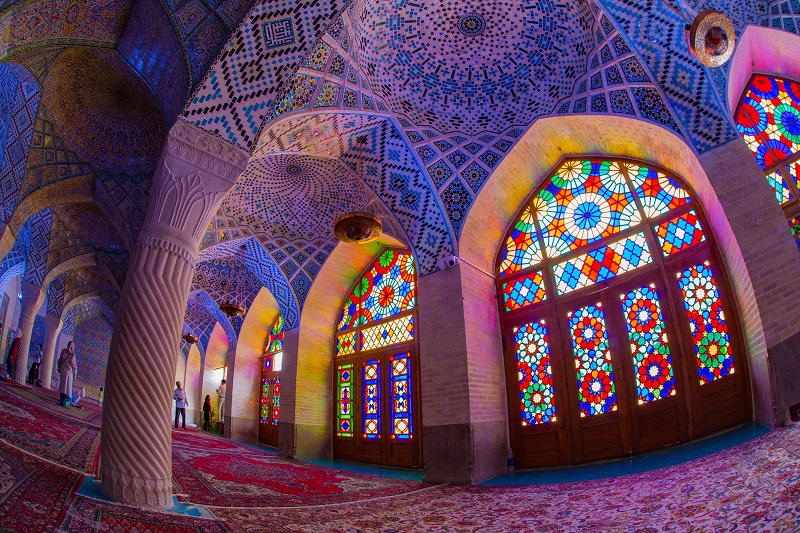Introduction of Iranian Art and Culture
Art and culture are intertwined and encompass a wide range of human creative expressions, beliefs, values, traditions, and customs that shape societies and individuals.

About Art and Culture
Art can be seen as a form of expression that communicates emotions, ideas, and narratives through various mediums such as visual arts (painting, sculpture, photography), performing arts (music, dance, theater), literature, architecture, film, and more. It allows individuals to explore their imagination, challenge conventions, and engage in critical thinking. Art has the power to inspire, provoke, evoke emotions, and foster a deeper understanding of the human condition.
Culture, on the other hand, refers to the shared beliefs, values, traditions, behaviors, and social norms of a particular group or society. It encompasses the ways of life, customs, rituals, languages, cuisine, clothing, and overall identity of a community. Culture provides a framework through which individuals interact, communicate, and make sense of the world around them. It shapes our perceptions, attitudes, and relationships with others.
Art and culture are interconnected in several ways. Art often serves as a reflection and expression of cultural values, beliefs, and societal issues. It can preserve and transmit cultural heritage, traditions, and stories from one generation to another. Art also plays a role in challenging, questioning, or critiquing cultural norms and promoting social change.
Furthermore, culture provides the context and inspiration for artistic creation. Artists draw inspiration from their cultural backgrounds, traditions, and experiences, infusing their work with cultural symbolism, aesthetics, and themes. In turn, art can influence and shape culture by challenging existing norms, introducing new ideas, and contributing to cultural innovation.
Iranian Art and Culture
Iranian art not only reflects the country's cultural heritage but also serves as a means of cultural expression, storytelling, and identity. It continues to evolve and inspire artists globally, contributing to the richness and diversity of the global art landscape.
Iranian culture and art history have a rich and diverse heritage that spans thousands of years. Iranian civilization has flourished in various periods, leaving behind a remarkable legacy in the fields of art, architecture, literature, music, and more. Here is an overview of the key periods and influences in Iranian culture and art history:
Ancient Persia (550 BCE - 651 CE):
The Achaemenid Empire, established by Cyrus the Great, marked the beginning of Persian civilization. During this period, monumental architecture such as Persepolis was built, characterized by intricate carvings and grandeur. The Parthian and Sassanian empires followed, contributing to the development of Persian art, including metalwork, rock reliefs, and vibrant textiles.
Islamic Golden Age (8th - 14th century):
With the advent of Islam in the 7th century, Persian culture fused with Islamic influences, giving rise to a golden age of art, science, and literature. Persian miniatures, intricate calligraphy, and exquisite Persian carpets became prominent during this period. Poets such as Rumi, Hafez, and Omar Khayyam created enduring literary masterpieces.
Timurid and Safavid Dynasties (14th - 18th century):
The Timurid dynasty brought a revival of Persian arts, literature, and architecture. The Safavid dynasty further developed the arts, establishing Persian carpets as sought-after luxury items and promoting the art of miniature painting. The construction of iconic architectural marvels like the Sheikh Lotfollah Mosque and the Isfahan Royal Square took place during this era.
Qajar Dynasty (1794 - 1925):
The Qajar period witnessed a fusion of traditional Persian art forms with European influences. Persian painting and calligraphy continued to flourish, while photography and lithography were introduced. Ornate palaces, such as the Golestan Palace, exemplified the opulent architectural style of the time.
Contemporary Era:
After the establishment of the Pahlavi dynasty in the early 20th century, modernization efforts influenced Iranian art and culture. Western-style painting, sculpture, and cinema gained prominence. Notable Iranian filmmakers like Abbas Kiarostami and Mohsen Makhmalbaf gained international recognition.
Throughout Iranian history, elements of Persian culture and art have influenced neighbouring, including Central Asia, the Indian subcontinent, and the Middle East. Iranian culture also encompasses diverse regional traditions, languages, and ethnicities, resulting in a vibrant tapestry of artistic expressions.
Iranian art and culture continue to evolve and thrive in the present day, with contemporary artists exploring new mediums and themes while staying connected to their rich heritage. Persian calligraphy, miniature painting, traditional music, and architecture remain cherished aspects of Iranian culture, contributing to its global significance and appreciation.